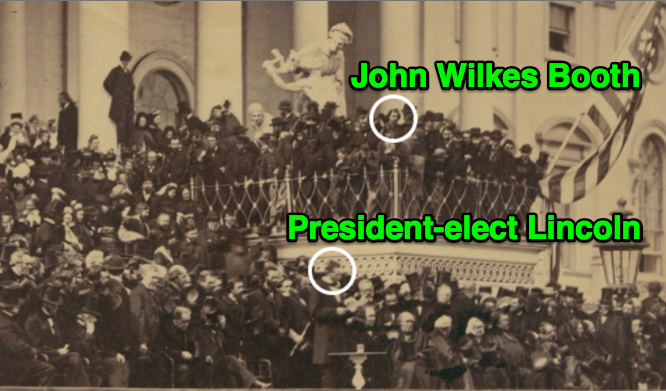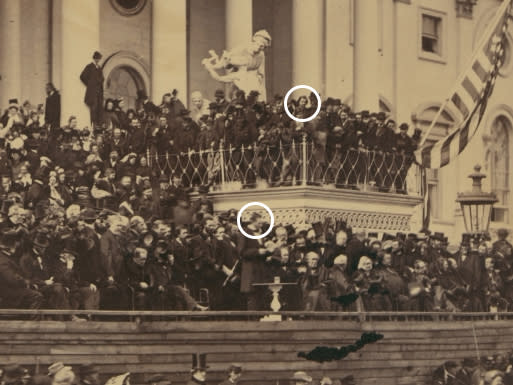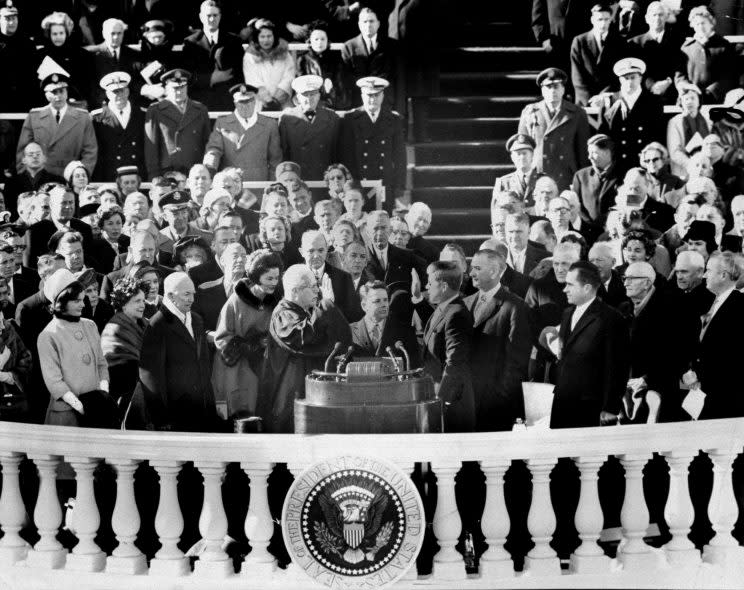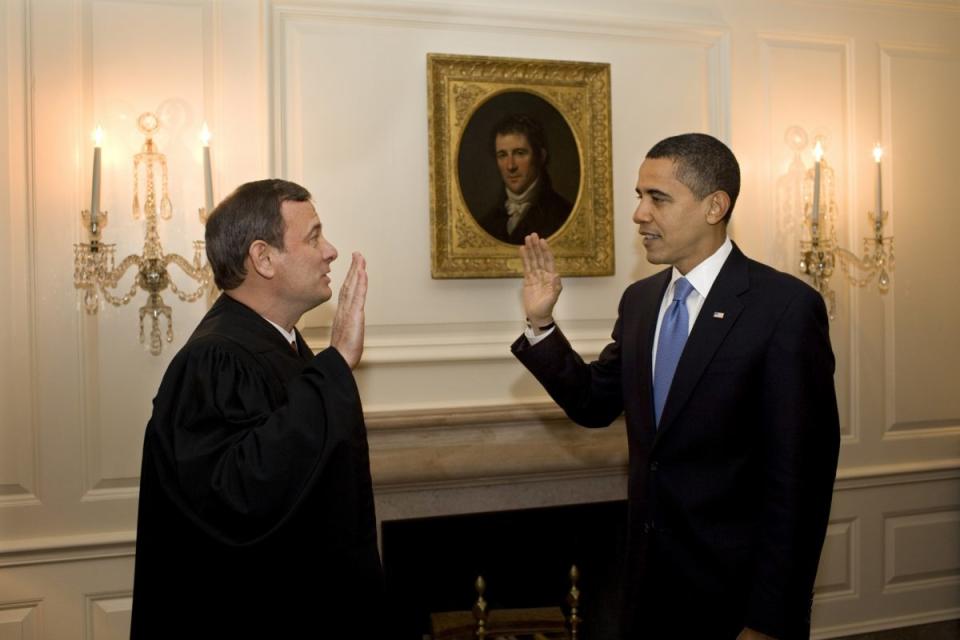11 strange moments from past US presidential inaugurations

When Donald Trump is sworn into office on Friday, an estimated 800,000 people will be in attendance at the historic event. Officials from three dozen agencies, as well as thousands of soldiers and police officers will also be there to make sure the proceedings go off without a hitch.
However, inauguration days haven’t always gone as smoothly as planned.
1789: George Washington had to borrow money to attend his own inauguration
While the final price tag for Trump’s inauguration could be upwards of $200 million, the first such event was a more frugal affair. In fact, George Washington had to borrow money just to get to New York City, which was the capital at the time.
Despite owning 60,000 acres and 300 slaves, the cash-poor Washington couldn’t sell or rent any of them as most other landowners were equally strapped for cash. In fact, Washington confided in his nephew that at least part of the reason he took the job was the salary, “as my means are not adequate to the expense at which I have lived since my retirement.”

1817: James Monroe bailed on a bickering Congress
The inauguration ceremony initially took place indoors. However, in 1817 the House and Senate battled over which chamber would get to host the event. Since no one could agree, President-elect James Monroe reportedly got fed up and decided to move the festivities outside, where they have largely been held (with a few exceptions for inclement weather) since.
1829: Andrew Jackson had to sneak out of the White House
Andrew Jackson’s 1829 celebration was perhaps the most chaotic. Jackson opened up the doors of the White House, and more than 20,000 people gleefully entered, surrounding the new Commander in Chief. Jackson had to escape through a window (or a side entrance, depending on the retelling) and spent the night at a hotel. The revelers only left the White House when tubs of whiskey-laced punch were rolled onto the South Lawn.
1841: William Henry Harrison died less than a month after his rainy inauguration speech
William Henry Harrison delivered a two-hour, 8,445-word address on a bitterly cold morning in the pouring rain, refusing to wear an overcoat or a hat. While his speech was the longest in inauguration history, his presidency would unfortunately be the shortest. He went to bed that night with a cold, which soon developed into a fatal bout of pneumonia. He died 32 days later.

1857: James Buchanan forgot President Franklin Pierce
Traditionally, the president-elect and the outgoing president ride to the Capitol for the ceremonies, however, there was a slight hiccup in 1857 at the inauguration of James Buchanan.
Buchanan arrived with the vice-president-elect, John C. Breckinridge, and was ready to proceed before realizing the outgoing president, Franklin Pierce, was missing. Officials had reportedly forgotten to pick him up from the Willard Hotel, so the festivities were delayed by 20 minutes while someone went to collect him.
1865: Vice President-elect Andrew Johnson drank too much whiskey before his oath
While the vice presidential oath is now performed immediately before the presidential oath, before 1937 VPs had their own swearing-in ceremony inside the Senate chamber.
In 1865, Andrew Johnson reportedly showed up to his ceremony drunk, having had several tumblers of whiskey to battle an illness. He then delivered a bizarre, slurred speech that led some Republicans to call for his resignation. Abraham Lincoln, however, later came to his VP’s defense, stating, “I have known Andrew Johnson for many years. He made a slip the other day, but you need not be scared; Andy ain’t a drunkard.”
1865: John Wilkes Booth took part in Abraham Lincoln’s festivities
Abraham Lincoln’s second inauguration came just months before the end of the Civil War. Tensions were high and worries about the president’s safety lingered.
Despite heightened security, John Wilkes Booth, the man who would fatally shoot President Lincoln just more than a month later, was photographed standing on the same stage during the address, along with several other conspirators in the assassination plot.
Booth would reportedly later proclaim to a friend, “what an excellent chance I had to kill the president, if I had wished, on Inauguration Day!”

1953: A cowboy threw a lasso around Dwight Eisenhower
Dwight D. Eisenhower was a very serious man — a five-star general, Army Chief of Staff and President of Columbia University. However, his ceremony had one of the wackier moments in inauguration history.
A California cowboy rode a horse in front of the president’s stage, stopped and threw a lasso around the native Texan’s shoulders.
That “California cowboy” was Montie Montana, a film star and rodeo rider who performed in 60 Rose Bowl parades and dozens of movies. Montana initially suggested presenting Eisenhower and his VP, Richard Nixon, with 10-gallon hats, but Eisenhower insisted on the lassoing. We’re glad he did, otherwise we wouldn’t be able to appreciate this bizarre photo of the event.

1961: JFK’s podium almost went up in flames
The 1961 affair was a comedy of errors. Before John F. Kennedy gave his legendary inaugural address, an overnight snowstorm nearly forced the festivities to be canceled. While the ceremony did go ahead, during the invocation a motor inside a lectern caught fire, sending a plume of blue smoke into the air.
Lyndon B. Johnson also flubbed the vice presidential oath, stating “without any mental reservation whatever” instead of “without any mental reservation or purpose of evasion.”
Poet Robert Frost then took the stage, but he couldn’t read his notes due to the reflection of the bright sun off the recently-fallen snow. Instead, he recited an older poem from memory, which he then mistakenly dedicated to “the president-elect, Mr. John Finley.”

1973: Richard Nixon dotted Pennsylvania Avenue with dead pigeons
Richard Nixon coasted to a landslide victory in his 1972 reelection campaign. However, with the specter of the Vietnam War and the emerging Watergate scandal, he was intent on making his inauguration a huge success.
According to the Washington Post, at Nixon’s request “the inaugural committee spent $13,000 to smear Roost No More, a chemical bird repellent, on tree branches along the parade route to deter pigeons.”
Unfortunately for Nixon, the repellent didn’t quite work as intended. Instead, the birds ate the spray and promptly became sick or died, littering the parade route with lame and dead pigeons.
2009: Barack Obama and Chief Justice Roberts messed up the oath of office
Barack Obama drew a record crowd for his first inauguration in 2009, with a whopping 1.8 million people in attendance. However, there was a slight hiccup with the swearing-in ceremony. Chief Justice Roberts misplaced a word in the oath, saying, “That I will execute the office of president to the United States faithfully.” The word “faithfully” should appear between “will” and “execute.”
Roberts re-administered the oath the next day, out of what White House counsel Greg Craig called “an abundance of caution.”




